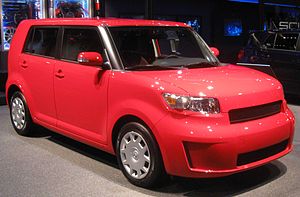My first car wasn’t anything special, other than it was my first car. It was an older model Ford, ran reasonably well, with one small problem — it went through oil almost as quickly as it did gasoline. At first I attributed that to being a function of the car’s age, but as the leakage grew, I eventually dealt with it by keeping a couple of quarts of oil in the trunk “just in case.” Eventually, I took the car to a dealership — but by the time they finished estimating the cost of a head gasket repair, let’s just say that, even on my limited budget, I could buy a lot of oil by the quart, over a long period of time, and still be ahead financially.
“Leakage” — the withdrawal of retirement savings via loan or distribution prior to retirement — is a matter of ongoing discussion among employers, retirement plan advisors, regulators and policy makers alike. In fact, EBRI Research Director Jack VanDerhei was recently asked to present findings on “The Impact of Leakages on 401(k) Accumulations at Retirement Age” to the ERISA Advisory Council in Washington.
EBRI’s analysis considered the impact on young employees with more than 30 years of 401(k) eligibility by age 65 if cashouts at job turnover, hardship withdrawals (and the accompanying six-month suspension of contributions) and plan loan defaults were substantially reduced or eliminated. The analysis assumed automatic enrollment and (as explicitly noted) no behavioral response on the part of participants or plan sponsors if that access to plan balances was eliminated.
Looked at together, EBRI found that there was a decrease in the probability of reaching an 80% real income replacement rate (combining 401(k) accumulations and Social Security benefits) of 8.8 percentage points for the lowest-income quartile and 7.0 percentage points for those in the highest-income quartile. Put another way, 27.3% of those in the lowest-income quartile (and 15.2% of those in the highest-income quartile) who would have come up short of an 80% real replacement rate under current assumptions would reach that level if no leakages are assumed.
The EBRI analysis also looked at the impact of the various types of “leakage” individually. Of loan defaults, hardships and cashouts at job change, cashouts at job change were found to have a much more serious impact on 401(k) accumulation than either plan loan defaults or hardship withdrawals (even with the impact of a six-month suspension of contributions included). The leakages from cashouts resulted in a decrease in the probability of reaching an 80% real replacement rate of 5.9 percentage points for the lowest-income quartile and 4.5 percentage points for those in the highest-income quartile.
Advisors take note: that effect from cashouts — not loans or hardship withdrawals — turns out to be approximately two-thirds of the leakage impact.
However, and as the testimony makes clear, it’s one thing to quantify the impact of not allowing early access to these funds — and something else altogether to assume that participants and plan sponsors would not respond in any way to those changes, perhaps by reducing contributions,1 potentially offsetting some or all of the prospective gains from restricting access to those funds.
Because ultimately, whether you’re dealing with an old car or your retirement savings account, what matters isn’t how much “leaks” out — it’s how much you put in, and how much you have to “run” on.
Footnote
- An EBRI/ICI analysis published in the October 2001 EBRI Issue Brief found that, “on average, a participant in a plan offering loans appeared to contribute 0.6 percentage point more of his or her salary to the plan than a participant in a plan with no loan provision.” Testimony provided to the ERISA Advisory Council testimony notes that it’s likely that a similar relationship exists with respect to the availability of hardship withdrawals. See “Contribution Behavior of 401(k) Plan Participants,” online here. ↩
'via Blog this'

























